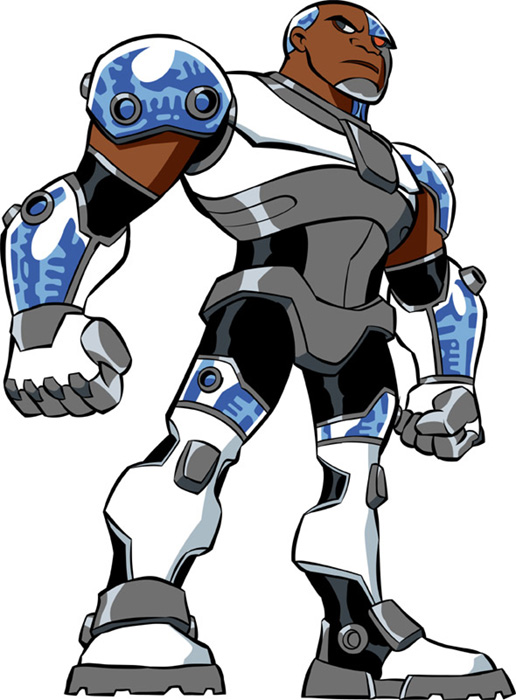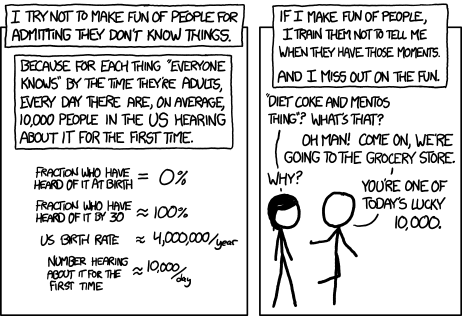
This chapter has one of the least enthusiastic lead-ins I've ever seen. The author assures you that generally speaking Cyberpunk settings are about TL 8 or 9, with Tech Level 9 advances being mostly medical in nature and reserved for rich people only. He then goes on to patiently point out that there are already GURPS books full of TL 8 and 9 gadgets, and you could jolly well go get one of them. It's like you're reading the author's passive aggressive whining to Steve Jackson about how he shouldn't have to write this chapter.
Last chapter was cybernetics, bionics, some specific positive qualities, yadda yadda. This is the actual equipment chapter for all the shit you’re not going to try and implant in your body.
In these days when you’re more likely to throw out your iPod when the internal battery expires than you ever are to replace it, dealing with shit like “power cells” can be a bit disconcerting. That’s not the most dated thing in this chapter, but it’s what it leads off with and is perhaps most iconic.
{Small aside: in GURPS Technomancer or whatever you have magic that actually can run off batteries, which yes means that you might need to carry around spare power cells for your TL8 wand of fireballs. There are times I love GURPS.}
The Power Cells rant is bizarre beyond belief. Everything runs on plutonium or antimatter or something. Figure it out your own damn selves. No recharging, no making antimatter bombs, final destination. I can't even figure out where the author was coming from here. If the author didn't want to bother thinking about how future devices were powered, why is there a half page tirade about how many inches tall a five pound power cell is (interesting fact: the D-cells listed here have a specific gravity of 11, which means that they weigh as much as if they were made of solid lead, while the B-cells have a specific gravity of 70, and are made out of fucking neutronium).
Ultimately it seems like a weird thing to take up half a page with. Surely, the power sources used in different cyberpunk worlds are different enough from what was in use in 1989 and from each other to warrant a discussion about their utility. But equally surely, the information given here is about the least useful possible rumination on the subject. This frankly seems like something that was copypastaed out of some eighties space opera to pad word count. The author really doesn't want to be writing this chapter – and it shows.
There’s a lot of shit in this chapter that other books would take for granted – like explaining that LASER is actually an acronym and spelling it out, or making a distinction between APS (armor piercing sabot) and APEX (armor piercing explosive) rounds for those old-fashioned chemical slugthrowers you insist on carrying around even those you live in a world of gauss needlers and laser pistols.
Speaking of which, laser pistols remain so rarely developed in fiction that these guys really shock you when they suggest various modifications for laser weapons – for $50, you can have a laser weapon modified to act as it’s own laser sight. Nifty! Still this entire chapterette could have been reduced to a one sentence “go look in GURPS Ultra-Tech” and that would have been sufficient.
Descriptions of equipment tell you both that you are in the eighties and also that this has been cribbed from something that is more space ship oriented than the nominal subject matter. You don't have “guns”, you have “chemical slug throwers”. Which is the kind of technobabble you would use if you were from the eighties and trying to talk as if you were from the far future space empire talking about the primitive boomsticks of the locals.
Star Wars still calls guns slugthrowers, for example.
Before Google Glass, there was the head’s up display (HUD):
A set of HUD goggles costs $500 and weighs 1/2 lb; it will run
off an A cell for a year, or can use the same power as other helmet or
suit systems.

The choices of what to give writeups to (and by extension, what to leave unsaid) in this chapter are completely incomprehensible to modern archeologists. There's an entry for “attache case”. No, the cyberpunk future hasn't apparently made great strides in attache case technology, it just wants you to know you can buy one for eighty of those special future dollars this book throws around. This is I suppose the closest we get to a meaningful reference point as to what the money is actually worth. An odd choice is all, personally I'd have gone with the taco standard rather than having players set their monetary expectations by attache case pricing, but whatever.
Yeah, this is 99% rock-standard “sci-fi” gear. You can equip Neal the Street Sam with durasteel longswords that cut Excalibur in two or opt to buy a vibroblade, a pair of anti-glare goggles costs $150 and a pair of light-intensifier contacts will set you back $300. There are a few stand-out items that are bizarre—electromagnetic mortar, spray-on ablative armor foam, a “biochemical” mist called Prism for disrupting laser attacks (have I mentioned lasers?), some Batman-style autograpnels which require Guns (Grenade Launcher) skill to use, scanlocks (electronic locks that are password or thumbprint/retinalprint/etc. encoded), electronic handcuffs that can be unlocked with a laser key from up to three yards away (what? Say it ain’t so, Cyberpig), a criminology kit (we would call this a CSI kit these days)…all kinds of stuff.
The chapter is largely a cut and paste job and really isn't edited that well. Outfitting a car to be remote operated costs $1 per ton (minimum $3000). Considering the relative lack of cars that weigh anything close to three thousand tons (that being seventy five cargo plane loads), I'm going to guess that's a typo. But due to how rudderless the costs and technology base is in this chapter (and indeed, this book), I really couldn't begin to tell you what the actual numbers are supposed to be.
I guess this is as good a time as any to really emphasize how tech-oriented that most cyberpunk RPGs tend to be. In D&D the solution to any given problem was combat, intelligence, or the right class-ability – often with a healthy dose of luck and dickishness necessary for good measure. In Shadowrun or Cyberpunk, a lot of the challenges were more skill-based, and a number of them really boiled down to what tech you had available. Cyberpunk characters in fiction were generally self-sufficient, skilled, knowledgeable individuals instead of combat monsters—they were their own spies because they had to be, and they’d end up proper fucked if they didn’t snoop when the snooping was good. The point is where a lot of D&D teams kit themselves out for an expedition, in a dungeon most of that shit goes to waste. In a general cyberpunk adventure, a lot of the incidental equipment might (arguably should) actually see use. Of course, there’s a lot of people that don’t play it that way…
The cyberpunk future was always envisioned as being clunkier and full of heavier stuff than the future actually ended up. The hand scanners that they use in airports apparently require you to chunk in an actual pound of batteries. It takes 3 seconds for a future password protected lock to verify your password and unlock. And of course, all of the measurements are in pounds, ounces, feet, and inches.
Don’t forget yards. The big thing about any given tech is generally size and speed; both are incredibly difficult to postulate very far in advance which gives a lot of cyberpunk tech nowadays a very retro feel. I mean come the fuck on, a Gibson-era cyberdeck is a behemoth compared to modern ultrabooks.
Yeah... why wouldn't you be able to flawlessly copy someone's mind and transfer it to a clone so as to create perfect mind and body duplication for like five thousand dollars? Frankly, I don't know why anyone would bother having children any more, considering how cheap it is to duplicate actual people. The book tries to pass itself off as generic cyberpunk most of the time, but the Braintaping thing really breaks that illusion. We've gone thoroughly off the reservation of what is normally considered “Cyberpunk” and are now talking about Cyteen. Which is a great book, and you should read it – but it's not Cyberpunk.
I will disagree in part with Frank on this point, since ROM constructs of people existed as far back as Neuromancer, and the general idea of uploading yourself remains a staple of cyberpunk-influenced works. That said, this is way more reminiscent of what became transhumanist literature and eventually found expression in cortical stacks in Altered Carbon and the Eclipse Phase RPG. It’s not that it doesn’t have a place in Cyberpunk, put this kind of “transcendence from the flesh” should arguably be rare, difficult, flawed, and/or made such that it brings into question important aspects of the character’s humanity (and definition of humanity)…in other words, the same way that upload-tech was used in cyberpunk fiction.
I would probably point this out as one of the main flaws of GURPS-style books, is that they do focus so much on giving you the mechanics to play however you want that they rarely address limitations—they throw a lot of shit at you and let the gamemaster decide what sticks in their game and what does not.
The chapter ends with cloning (forced-growth clones!), brain transplants (okay?), and lots of drugs with names like morphazine and my personal favorite for wackiness: Dryad.
Dryad is the street name for Di-radiochloride, a bizarre form of irradiated swimming-pool chlorine that was discovered in the late 1990s. It is available in both powder and tablet form. Each dose of Dryad weighs 1/4 gram and costs $10; the effects last 30 + 5d minutes. During this time, the user has the Overconfidence and Paranoia disadvantages. It also raises Speed by 1, but decreases DX (and all DX-based skills) by 1. If taken infrequently, Dryad is non-addictive. At the end of each week that a character has used Dryad more than once per day, he must make a Will roll to avoid Addiction. Dryad has no penalties on the withdrawal roll, and is a -5 point Addiction.

















